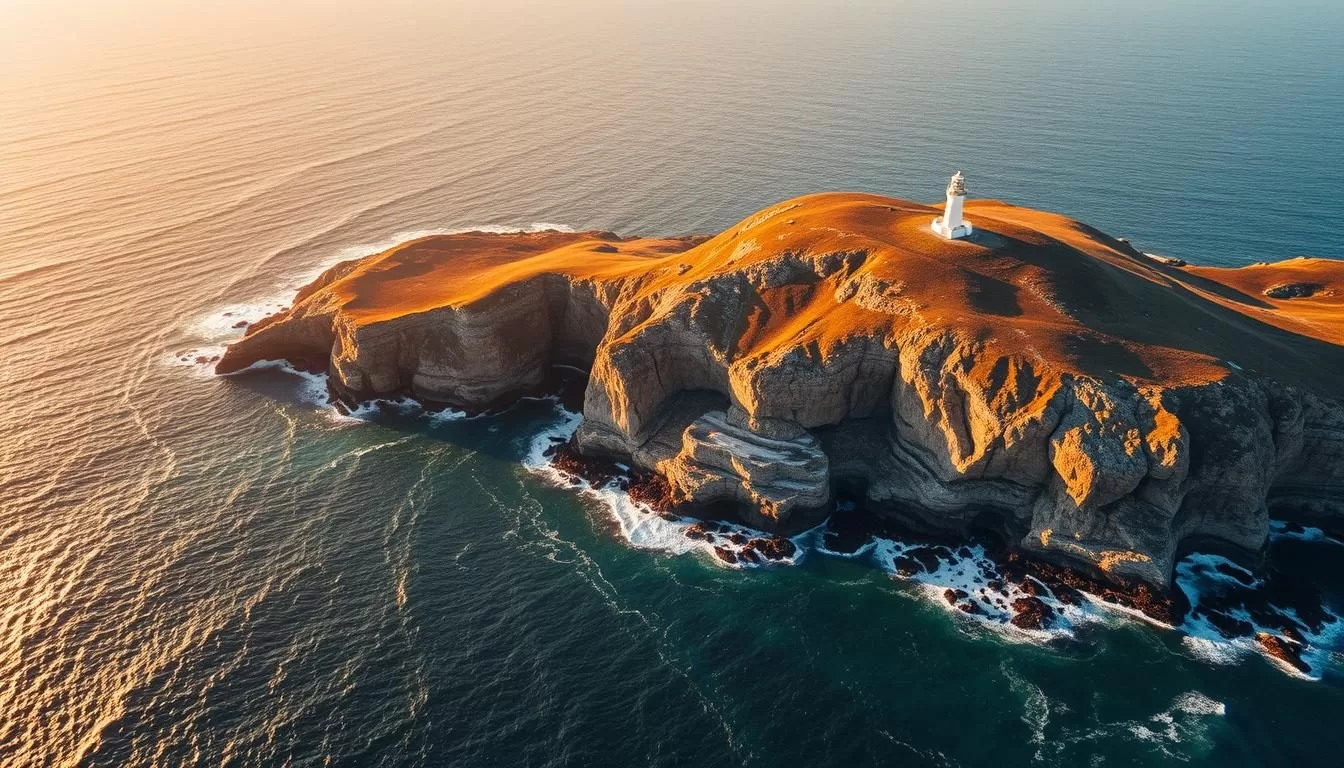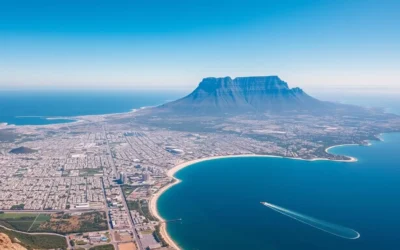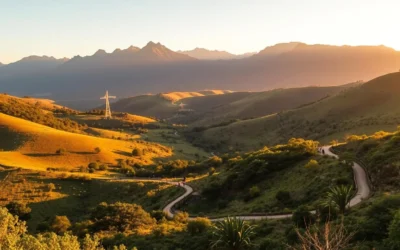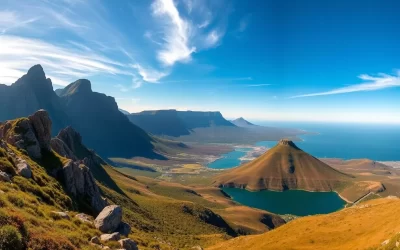Imagine standing at the southernmost tip of Africa, where the Indian and Atlantic Oceans meet. Cape Agulhas is a place of breathtaking natural beauty, rich history, and diverse wildlife. Here, you can explore the historic lighthouse, discover shipwrecks, and venture into the unique coastal landscape.
This remarkable destination offers a unique experience, with its indigenous fynbos flowers, incredible whale sightings, and abundant marine life. As you explore Agulhas National Park, you’ll discover why it’s a must-visit destination in South Africa. Get ready to immerse yourself in the natural beauty and rich history of this incredible coastal wilderness.
Discovering the Southernmost Tip of Africa
Cape Agulhas, the southernmost point of Africa, is where the Atlantic and Indian Oceans meet in a spectacular display of natural beauty. As you visit this remarkable location, you’ll be standing at the edge of the African continent, a moment that promises to be both exhilarating and humbling.
Where Two Oceans Meet
The confluence of the two oceans is not just a geographical phenomenon but a visual spectacle. The difference in the water’s color and temperature creates a striking visual effect, making it a unique spot for photography and observation.
The Iconic Tip of Africa Monument
The Tip of Africa Monument is a significant landmark that marks the southernmost point of the African continent. This monument is not only a symbol of geographical importance but also a celebration of South Africa’s rich heritage. Visitors can explore the surrounding area, including a boardwalk that provides safe access while protecting the fragile natural environment.
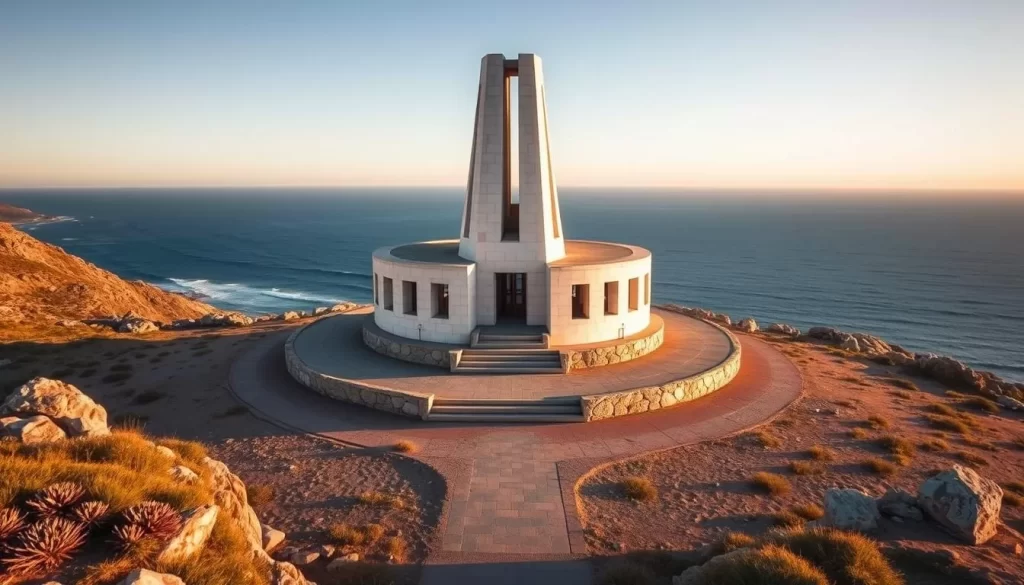
As you explore this area, you’ll have the opportunity to learn about the geographical calculations that determined this exact location as Africa’s southernmost point. The experience is enriched by the perfect photo opportunities available at the monument.
Exploring the Historic Cape Agulhas Lighthouse
Located within Agulhas National Park, the Cape Agulhas Lighthouse offers a unique blend of history, maritime significance, and breathtaking views. As one of the most iconic lighthouses in South Africa, it has played a crucial role in maritime navigation and safety along the treacherous coastline.
Climbing to the Top for Panoramic Views
For a truly unforgettable experience, climb to the top of the Cape Agulhas Lighthouse. The panoramic views from the top are simply stunning, offering a glimpse of the surrounding landscapes and the convergence of the two oceans. On a clear day, you can see for miles in every direction, making it a photographer’s paradise.
The Lighthouse Museum
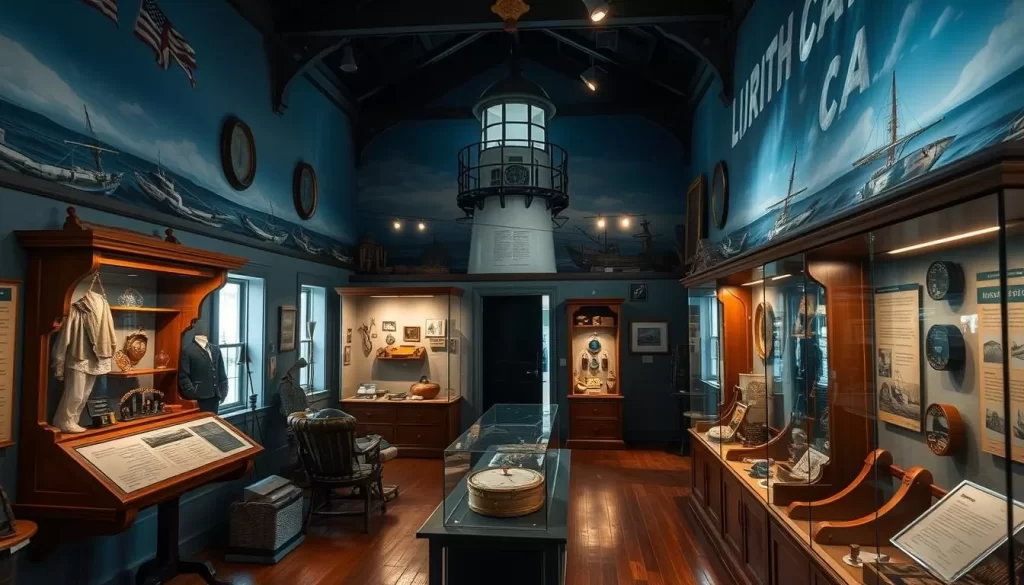
The Lighthouse Museum, located on the ground floor of the Cape Agulhas Lighthouse, is a treasure trove of maritime history. The museum showcases a fascinating collection of historical artifacts, photographs, and interactive displays that tell the story of lighthouse keeping and maritime navigation. You can learn about the evolution of lighthouse technology and the significant role lighthouses have played in saving lives at sea.
Hiking Trails in Agulhas National Park
As you explore Agulhas National Park, you’ll discover a variety of hiking trails that offer unique experiences. The park is home to diverse landscapes, from indigenous fynbos to rugged coastlines, making it a paradise for hikers.
The Rasperpunt Hiking Trail
The Rasperpunt Hiking Trail is a moderate hike that takes you through some of the park’s most scenic areas. This trail is ideal for those looking to experience the natural beauty of Agulhas National Park without straying too far from the rest camp.
The Two Oceans Hiking Trail
The Two Oceans Hiking Trail is an 11km route that showcases the meeting point of the Indian and Atlantic Oceans. Starting from the Agulhas National Park Rest Camp, this trail is moderately difficult and takes approximately 3-4 hours to complete. Along the way, you’ll traverse through pristine indigenous fynbos and enjoy views of the ocean, where you can spot old fishing traps in the water.
Some highlights of the Two Oceans Hiking Trail include:
- Embarking on an 11km route that highlights the unique meeting point of two oceans.
- Discovering the trail’s starting point at the Agulhas National Park Rest Camp.
- Learning about the estimated 3-4 hour duration and moderate difficulty of the trail.
- Exploring historical and cultural elements, including ancient fish traps.
- Understanding the best times for hiking to optimize wildlife viewing and photography.
Marine Life and Whale Watching at Agulhas National Park
The waters around Agulhas National Park are teeming with life, making it a perfect spot for marine enthusiasts. The unique convergence of the Indian and Atlantic Oceans creates a rich marine environment that supports a wide variety of wildlife.
Best Seasons for Southern Right Whale Sightings
The best time to visit Agulhas National Park for whale watching is from June to November, when Southern Right Whales migrate to the area’s sheltered waters to mate and give birth. During this period, you can witness these gentle giants up close, making for an unforgettable experience.
Other Marine Wildlife to Spot
Beyond whales, the park is home to a diverse array of species, including playful dolphins, Cape fur seals, and various porpoise species. The nutrient-rich waters also support a rich variety of fish, making it one of South Africa’s most productive fishing grounds, where the warm and cold ocean currents meet.
Exploring Shipwrecks Along the Cape of Storms
Cape Agulhas, known historically as the “Cape of Storms,” is home to a multitude of shipwrecks that tell tales of the region’s challenging maritime past. The area’s complex maritime history is reflected in its numerous wrecks, which have been shaped by centuries of navigation and trade.
The Meisho Maru Shipwreck
The Meisho Maru, a Japanese fishing trawler, met its fate off the coast of Cape Agulhas. The wreck serves as a poignant reminder of the region’s treacherous maritime conditions and the risks faced by those who venture into these waters. You can explore the story behind this shipwreck and understand its significance in the maritime history of the area.
Maritime History of the Region
The maritime history of Cape Agulhas is deeply intertwined with the broader history of global navigation and trade. As a crucial point on the spice trade route between Europe and Asia, the cape played a pivotal role in shaping global commerce. The accurate mapping of this geographical point was vital for safe navigation, influencing local culture and traditions that reflect centuries of international maritime influence.
Relaxing Activities at Agulhas National Park
Agulhas National Park offers more than just adventure; it’s also a haven for those seeking relaxation and tranquility. As you explore the park, you’ll find various activities that allow you to unwind and connect with the natural beauty surrounding you.
Swimming in the L’Agulhas Tidal Pool
The L’Agulhas Tidal Pool is a perfect spot for a refreshing swim. This natural pool, filled with seawater, offers a safe and enjoyable swimming experience amidst the stunning coastal scenery.
Fishing at the L’Agulhas Bank
Fishing at the L’Agulhas Bank is a relaxing activity that combines the thrill of catching a variety of fish species with the serene beauty of the Western Cape coastline. The area is renowned for its rich marine life.
Bird Watching Opportunities

The fynbos and coastal habitats of Agulhas National Park make it a paradise for bird enthusiasts. With over 170 species recorded, you can spend hours spotting birds in this beautiful area, enjoying the tranquility of nature.
Practical Information for Visiting Agulhas National Park
Your adventure to Agulhas National Park starts here with essential visitor information. To ensure a smooth and enjoyable trip, consider the following practical tips.
Best Time to Visit
The best time to visit Agulhas National Park is during the spring and autumn months when the weather is mild and pleasant. These seasons offer ideal conditions for outdoor activities such as hiking and wildlife spotting. The park is open year-round, but the shoulder season is recommended to avoid crowds.
Accommodation Options
Agulhas National Park offers various accommodation options to suit different preferences and budgets. You can choose from self-catering units, camping sites, or luxury lodges in the surrounding areas. Booking in advance is recommended, especially during peak travel seasons.
Getting There from Cape Town
The drive from Cape Town to Agulhas National Park takes approximately 2 to 3 hours by car, covering a distance of about 170 kilometers. The scenic route via the N2 highway and R316/R319 is recommended, with potential stops at charming towns like Caledon, Napier, and Bredasdorp. Most of the journey is on well-maintained paved roads, making it a pleasant drive through some of South Africa’s most beautiful landscapes.
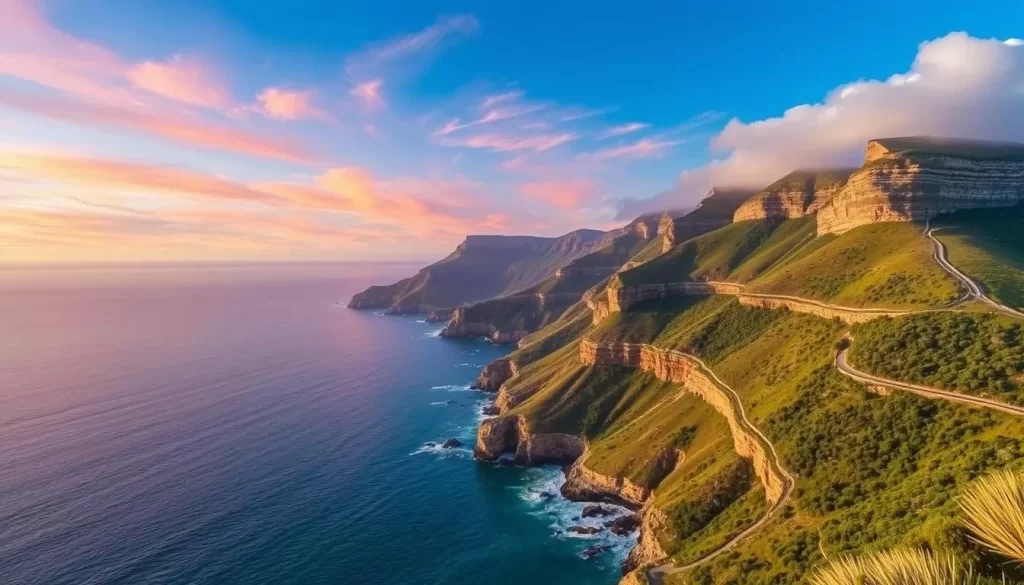
Conclusion
The beauty of Agulhas National Park lies in its ability to bring together nature, history, and geography in a single location. As South Africa’s southernmost national park, it offers a unique experience where you can stand at the edge of a continent. The park’s diverse attractions, including its geographical significance, rich biodiversity, and historical features, make it a rewarding destination.
You can visit Cape Agulhas as a day trip from Cape Town or as part of a longer exploration of South Africa’s coastal treasures. The park’s conservation efforts protect unique fynbos vegetation, marine ecosystems, and cultural heritage sites. To make the most of your visit, plan for the right duration and check the weather conditions beforehand. Let Kubwa Five Safaris help you build unforgettable memories of your trip.
The above is subject to change.
Check back often to TRAVEL.COM for the latest travel tips and deals.
